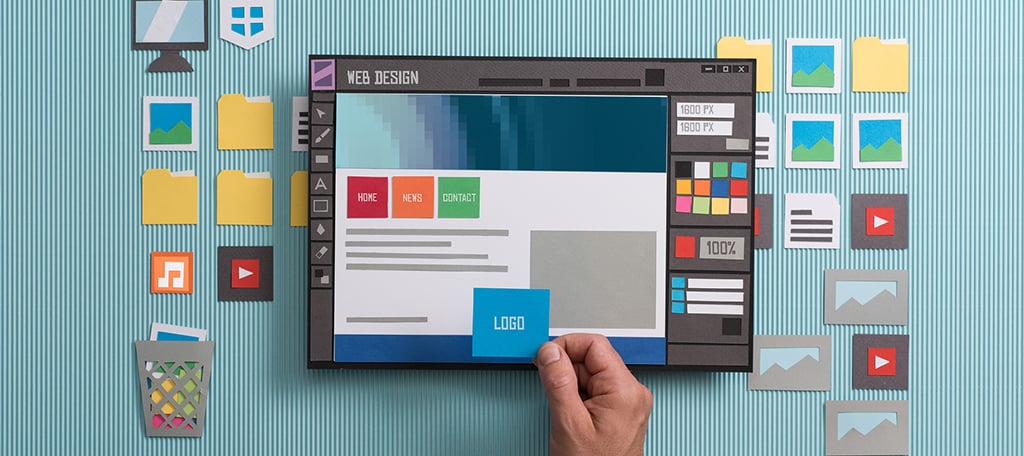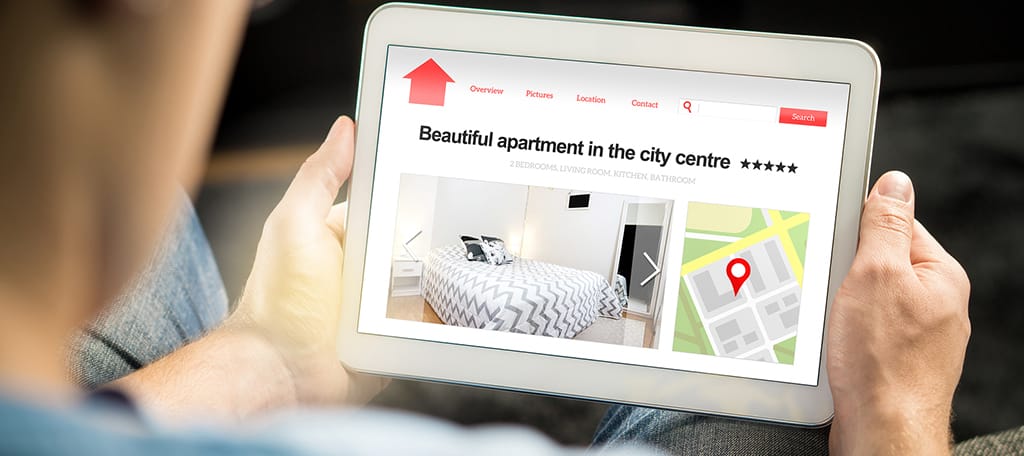
Since the days the first web pages sprouted up over public access to the Internet, design has evolved. For one thing, it takes a great deal more strategy to succeed today thanks to the immense amount of competition. As a result, you need to pay more attention to website design best practices.
Web pages are no longer simply pieces of information about a product, service or brand. They need to offer engagement and be a part of your customer’s experience.
Here are 17 website design standards and best practices for 2018. And some of them may continue for years to come.
1. Implement a Blog

Blogging is a way to engage an audience while bringing attention to your brand. It’s a way to offer something free to the visitor, which is often influential in creating a conversion if the content resolves a problem or answers a question.
According to WordPress.com, blogs receive more than 20 billion page views each month on the brand’s network. And that’s not including other blogging platforms on the Internet.
It’s such an effective way to boost a brand that most companies offer this style of in-depth and relevant content nowadays. It’s all about engaging the reader and giving them something of quality to remember.
For example, you’re reading one right now.
2. Keep Branding a Priority

Most website developers will include a company logo somewhere in the design that remains static. This means it’s viewable from virtually every page. However, branding goes beyond just making sure the logo is visible.
Company name, imagery and even the content itself need to be forms of branding. Of course you don’t want it to seem too salesy. But it’s still important that your visitors keep your business in mind throughout the site.
Think of it like offering visitors a story behind your business and what it represents. Then carry that emotion throughout the site and its design.
3. Don’t Pack too Much in One Appearance

There is such a thing as too much design. Images are effective at gaining attention, but they can also become a cause of confusion if the webpage appears too busy. In other words, you want to utilize “white space.”
This doesn’t mean you need to dive into a minimalist approach, though. In fact, white space doesn’t mean the area between content and images needs to be “white.” Some of the best website design and development best practices involve using various colors and even background imagery.
The point is that you don’t want your webpage to be distracting by appearing cluttered. This includes content, banners, images and tools you may want to have on your pages.
4. Guide Easy Decision Making

Offering visitors too many options has potential to slow the decision-making process or even confuse indecisive consumers. This increases the odds of a customer to abandon a cart.
Most shoppers want a streamlined, quick and easy process. This is especially true as people want speedy transactions from smartphones. After all, mobile commerce contributed to more than $30 billion in sales in 2017 within the United States.
This includes properly categorizing content. Optimizing categories helps make it easier for guests to find exactly what they are looking for by limiting options in each segment. It’s important to understand this especially if you want to start a blog.
5. Optimize Landing Pages

Landing pages are an important part of making conversions online. However, not everyone puts in the best web design practices when creating them. In reality, many landing pages from paid systems like AdWords are poorly structured and often lose customers.
One of the best methods for developing a landing page for paid ads is to keep it simple. It doesn’t need to focus on SEO, because that’s what the ad is for in the first place. All you would really need is perhaps a brief introduction and a call to action.
In contrast, landing pages for SEO are a bit different. You need the engagement factor and content to rank in search engines.
6. Consider Adding Breadcrumbs

A lot of developers will implement a breadcrumb system on their sites. This is a short series of links displaying how the webpage content is structured. This includes categories within eCommerce as well as blogs.
Breadcrumbs help users find their way back to previous sections of the website. Instead of hitting the back button or otherwise getting lost in the content, a visitor can just click the link and return to a specific starting point.
Remember, you want to keep the site quick and easy breadcrumbs assist in that regard.
7. Keep Image Sizes Low

Image sizes play a crucial role in the performance of any website. Of all the elements you can add, photos are often the ones that take the most time to load. This is why it’s important to keep images sizes as low as possible.
The goal of any website is to load within three seconds. This is because most people will abandon a website if it doesn’t. Unfortunately, the average speed across various industries is 8.66 seconds.
What does this mean for you? It means that keeping your site faster than eight seconds puts it faster than average. It also means there is a far less chance of losing a customer than your average competitor.
8. Use Color to Attract the Eye

Backgrounds and images are not the only things you should color in your website design. Using contrasting text is a way to draw the eye to specific information you want visitors to know immediately.
For example, let’s say you use a dark grey background on your site and utilize white text. What would happen if you turned a call to action or an important link to a color like orange, green or bright blue? It attracts the eyes quicker and engages the visitor.
This is partially why many people will use bold in text formatting. It differentiates the content from the rest by making it more pronounced.
9. Animate Certain Areas of the Site

Animation is an engaging aspect of many website designs. This is especially true if the animations are interactive for the user. Think of how parallax layouts feel more “alive” when you scroll down the page.
Now I’m not saying every element on the website should be animated. Otherwise, it’ll look like something ripped out of the early 2000s as the overuse of GIFs made pages appear tacky.
However, slight animations and movements can keep the visitor interested in the content.
10. Understand the Power of Floating Elements

Floating elements of a site are those which remain regardless if the user scrolls down or clicks a link. Many refer to these things as, “sticky.” And what they offer is a way for visitors to remain in control during their entire experience.
For instance, sticky social links remind users they can share the content, product or service at any time during their visit. A floating navigation bar gives people a way to manage the site without scrolling up and down.
Many sites will use things like floating videos relevant to content a visitor is reading. This provides an option to read more or simply watch the video.
11. Incorporate More Video

Speaking of video, incorporating more of this in your website design is beneficial for engaging visitors. About 55% of people who watch videos do so in their entirety, which is more than any other type of content.
Video content is such a powerful medium today that more marketers are implementing it into day-to-day practices. About 89% of marketers conducting business-to-business interactions do it with content marketing, and a large portion of it is through video engagement.
You can use videos to show how products are used, the impact of services or just to offer an entertaining way to share your brand.
12. Use Human Faces in Imagery

Human faces inspire emotion, connect with an audience and are often perceived in a more positive light. Some of this has to do with the human’s affinity for empathy and registering emotions. It’s why happy, smiling people are predominantly in business imagery.
On Instagram, posts with human faces are preferred images as they are about 38% more likely to be “liked” and 32% more likely to receive comments. This means being “real” is more valuable than something that is more artful.
This doesn’t mean you have to throw the artsy stuff in the trash. However, understand how integrating real people can have an effect on your audience.
13. Keep an Eye on Visitor Interaction

Keeping a close eye on data is invaluable when designing a site for your target audience. However, it goes deeper than using Google Analytics reports to power your data collection. Visits are one thing, but how are people actually using your website?
Tools like heatmaps are quite useful as they show you where people are clicking, scrolling and reading on your site. This is often done by tracking the movement of the mouse pointer, which is often an indication of eye movements as well.
They are among some of the best website marketing tools to help grow an audience and enhance sales. This information can help you restructure the design while making sure important elements are always in the field of view.
14. Don’t Underestimate the Power of CMS

Content Management Systems, or CMS, are powerful tools to get a site up and running in as little time as possible. The base framework is already there, and all many of them need is content to get started.
Many developers not only use CMS applications because it cuts out a lot of design time. Systems like WordPress are also completely customizable and are capable of becoming virtually anything you want.
To put this into perspective, WordPress is used in more than 31% of all monitored websites on the Internet. This is mostly because of how easy, flexible and designer-friendly the system is.
15. Keep Leveraging Social Media

Social media is still a vastly important aspect of interaction for people. And although content marketing is still the most effective marketing techniques, about 10% of marketers worldwide prefer social media.
But it takes more than just an occasional post to engage the audience. The purpose of social media is to interact – to be “social.” This means commenting, replying and sharing content your followers may be interested in even if it’s not something you created.
The bottom line is social media will probably never go away, which means you need to capitalize on it today to remain competitive.
16. Develop with Security in Mind

Never underestimate the value of security, even if you’re developing a basic website for company information. Bots are constantly scouring the Internet for easy targets, and they do not care whether your site receives one million or one hundred visits per month.
Securing your website today involves everything from using strong passwords to routinely scanning the file system for hacks and malware. All it takes is the slightest exploit and your site can start spamming people who don’t even know it exists.
And always keep a backup of your site available. It’ll help recover in the event of a disaster whether it’s a hacker or coding mistakes when designing.
17. Offer Variable Forms of Communication

Preferred communication is an easy way to retain visitors. Not everyone wants to make a phone call or send an email. For example, about 48% of consumers would rather use live chat than other forms of communication.
Make these forms of communication easy to access and plainly visible. In reality, people often feel more comfortable buying from a company that is easy to contact. Luckily, elements like chatbots are not that difficult to add. And they can make a profound difference in sales and leads.
Make it Worthwhile for Visitors
When going over your website design best practices checklist, keep the users in mind. It’s not about what you want to see on the site, but more of what they want to experience. Just because you think something “looks cool,” doesn’t mean your visitors will feel the same.
Pay attention to your data. The customers will help guide you to a more appealing layout with a higher rate of engagement.
